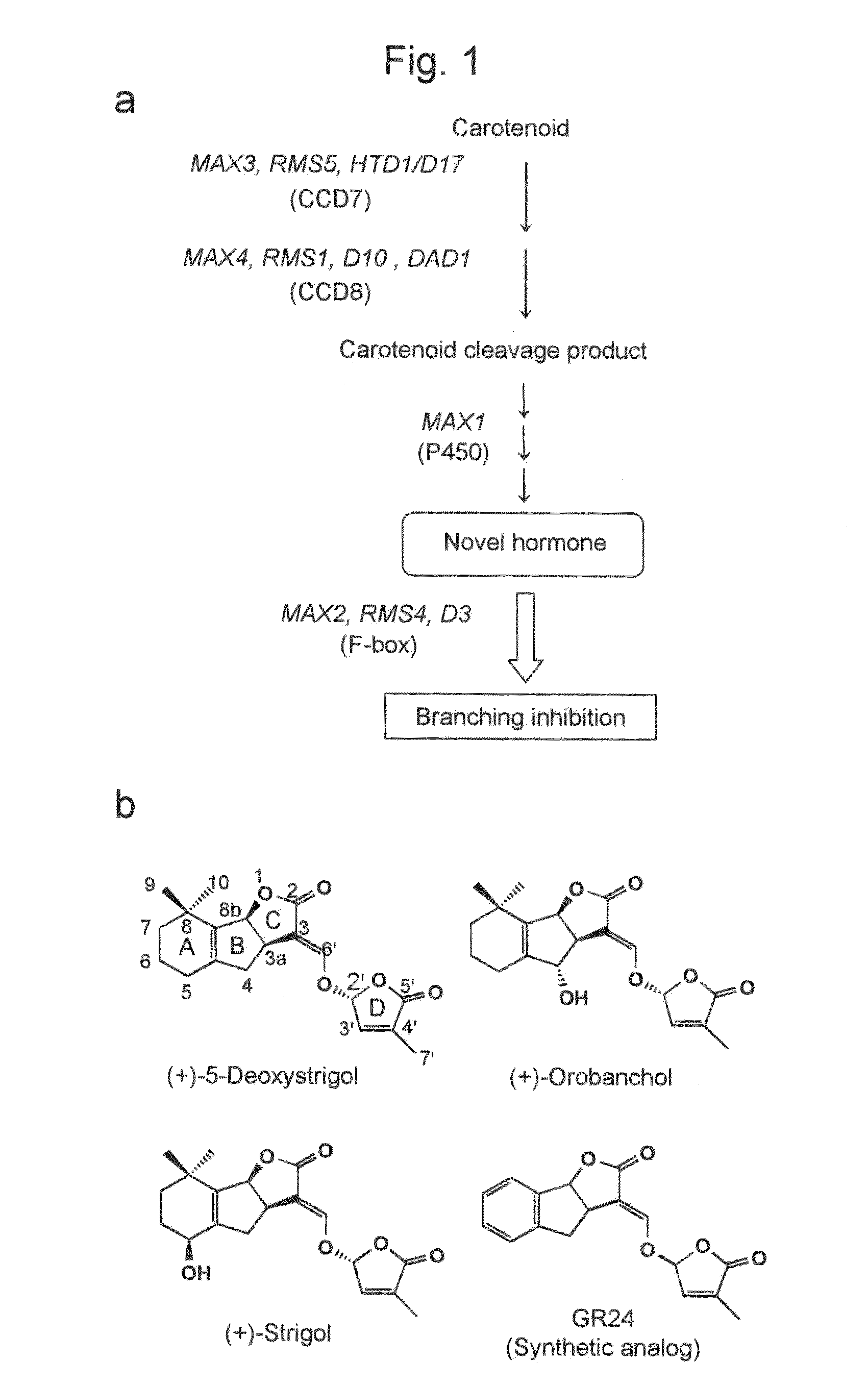Method for controlling root parasitic plants
a technology of root parasitic plants and parasitic plants, applied in the field of controlling root parasitic plants, can solve the problems of no effective method, damage to agricultural crops caused by root parasitic plants, and affect the food supply of as many as 300 million people, and achieve the effects of low capacity, high strigolactone production capacity, and reduced damage to agricultural crops
- Summary
- Abstract
- Description
- Claims
- Application Information
AI Technical Summary
Benefits of technology
Problems solved by technology
Method used
Image
Examples
examples
[0041]The present invention is hereafter described in greater detail with reference to the following examples, although the technical scope of the present invention is not limited thereto.
Introduction
[0042]Shoot branching involves the formation of axillary buds in the axil of leaves and subsequent outgrowth of the buds. Previous studies have suggested the involvement of a novel, as yet unidentified, hormone in inhibiting outgrowth of axillary buds, using a series of recessive mutants that exhibit enhanced shoot branching. These mutants include ramosus (rms) of pea (Pisum sativum)1-4, more axillary growth (max) of Arabidopsis5-9, decreased apical dominance (dad) of petunia (Petunia hybrida)10,11 and dwarf (d) or high-tillering dwarf (htd) of rice (Oryza sativa)12-14. Reciprocal grafting experiments, double mutant analysis and cloning of these genetic loci suggested that the novel hormone is biosynthesized from carotenoids and moves acropetally to inhibit axillary bud outgrowth15. In ...
PUM
| Property | Measurement | Unit |
|---|---|---|
| height | aaaaa | aaaaa |
| diameter | aaaaa | aaaaa |
| flow rate | aaaaa | aaaaa |
Abstract
Description
Claims
Application Information
 Login to View More
Login to View More - R&D
- Intellectual Property
- Life Sciences
- Materials
- Tech Scout
- Unparalleled Data Quality
- Higher Quality Content
- 60% Fewer Hallucinations
Browse by: Latest US Patents, China's latest patents, Technical Efficacy Thesaurus, Application Domain, Technology Topic, Popular Technical Reports.
© 2025 PatSnap. All rights reserved.Legal|Privacy policy|Modern Slavery Act Transparency Statement|Sitemap|About US| Contact US: help@patsnap.com



